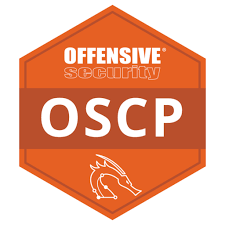90-Day OSCP Week-by-Week Roadmap


Weeks 1–3 – Reconnaissance Depth, Buffer Overflow Internals & Cross-OS Enumeration
Track 1 – Reconnaissance Mastery
Passive Recon: amass, subfinder, crt.sh, ASN mapping, CDN bypass via DNS history, Shodan/Censys correlation.
Active Recon: Nmap deep scans (service-specific NSE scripts, stealth timing), banner grabbing, full TCP/UDP sweep.
Technology Fingerprinting: Wappalyzer CLI, testssl.sh, HTTP header analysis, favicon hash matching.
Recon Data Management: Organize with Obsidian mind maps, categorize assets for future exploitation.
Track 2 – Windows Buffer Overflow
Stack-based buffer overflow: manual fuzzing, offset finding with Mona, shellcode generation with msfvenom.
SEH exploitation: Structured Exception Handler chaining, bad character analysis, DEP/ASLR bypass.
ROP chain basics: Gadget hunting via ROPgadget, chaining for VirtualProtect calls.
AV Evasion: Custom encoding, polymorphic shellcode patterns.
Track 3 – Client-Side Exploitation
Malicious DOC/XLS with macro payloads, HTML smuggling, HTA backdoors.
Multi-stage payloads: Stage 1 macro → Stage 2 stager → Stage 3 C2.
BeEF hook injection in phishing campaigns.
Track 4 – Cross-OS Enumeration
Linux: enum4linux-ng, NFS/RPC enumeration, SSH key discovery.
Windows: SMB null sessions, RPCclient SID brute-forcing, user hunting.
Mixed: Banner analysis to determine patch levels.
Weeks 4–6 – Advanced Web Exploitation & Linux Exploit Development
Track 1 – Web Application Exploitation
SQL Injection (SQLi)
Manual exploitation: UNION-based extraction, error-based techniques with ORDER BY/GROUP BY checks.
Blind boolean & time-based SQLi using payload tuning and sqlmap tamper scripts for WAF bypass.
Privilege escalation via SQLi to OS-level commands (e.g., xp_cmdshell, LOAD_FILE).
Cross-Site Scripting (XSS)
Stored, reflected, DOM-based injection in modern JS frameworks.
Cookie theft, CSRF token stealing, and session hijacking using iframe/domain bypass tricks.
File Upload Exploits
Bypassing extension filtering with .php%00.jpg, MIME-type tampering.
Polyglot payloads (image + PHP shell), race conditions during upload validation.
Local/Remote File Inclusion (LFI/RFI)
Log poisoning with PHP/Apache/Nginx access logs for code execution.
php://filter wrapper for base64 decoding and code injection.
Payload delivery via EXIF metadata injection in uploaded images.
Server-Side Request Forgery (SSRF)
Accessing restricted admin panels, internal APIs, or metadata endpoints (169.254.169.254).
XML External Entity (XXE)
Local file disclosure, internal port scanning, and OOB data exfiltration via Burp Collaborator.
Track 2 – Linux Exploit Development
Binary Security Checks
Analyzing protections with checksec, identifying NX, PIE, RELRO status.
Stack Smashing Attacks
ret2libc exploitation for shell spawning.
Stack pivoting to custom shellcode stored in controlled memory.
Heap Exploitation
Unsafe unlink, fastbin duplication for arbitrary write.
Kernel Exploitation Basics
Identifying kernel version, mapping against CVEs, adapting public PoCs for environment.
Writing Privilege Escalation Exploits in C
Crafting minimal local root exploits for known kernel vulnerabilities.
Track 3 – Practice Platforms
HackTheBox: Medium–Hard tier machines focusing on web + Linux exploitation.
Proving Grounds: Intermediate boxes with manual exploitation approach.
Avoid using Metasploit for initial foothold — rely on custom scripts, manual exploitation, and alternative tools to simulate OSCP exam conditions.
Weeks 7–9 – Privilege Escalation, AD Exploitation & Pivoting
Track 1 – Windows Privilege Escalation
Misconfigured Services: Service binary replacement, weak service permissions, executable path hijacking.
Unquoted Service Paths: Leveraging spaces in file paths to execute malicious binaries.
Registry Permission Abuse: Exploiting weak ACLs on registry keys for privilege escalation.
Token Impersonation: Juicy Potato, Rogue Potato, PrintSpoofer for SYSTEM-level access.
UAC Bypass Techniques: Exploiting CVE-2019-1388 and similar privilege escalation vulnerabilities.
Track 2 – Linux Privilege Escalation
SUID Binary Exploitation: Identifying and abusing misconfigured SUID binaries; using GTFOBins for known exploits.
Cron Job Exploitation: Abusing writable scripts or PATH misconfigurations in scheduled tasks.
PATH Hijacking: Placing malicious executables earlier in PATH to intercept legitimate calls.
Kernel Exploits: Exploiting Dirty COW (CVE-2016-5195), Dirty Pipe (CVE-2022-0847) for root access.
Capabilities Abuse: Exploiting cap_net_bind_service, cap_sys_admin for privilege escalation.
Track 3- Active Directory Attacks
Enumeration
BloodHound, SharpHound
PowerView for legacy systems
Authentication Abuse
Kerberoasting, ASREPRoasting, silver/golden tickets
DC impersonation & credential dumping
Lateral Movement
WMI, WinRM, DCOM
Pass-the-Hash, Overpass-the-Hash
Persistence
Golden Tickets, shadow copy abuse
Final Lab Work
Public → Internal pivot → Domain Controller takeover
Track 4 – Pivoting & Tunneling
SSH Dynamic Port Forwarding: Using ssh -D for SOCKS5 proxy creation to route traffic through compromised hosts.
SOCKS Proxying: Configuring proxychains or tsocks to tunnel tools through a pivoted connection.
Chisel HTTP Tunnels: Deploying Chisel for HTTP/WebSocket-based tunneling to bypass firewall restrictions.
Multi-Hop Pivot Chains: Chaining multiple pivots (Host → Jump Box → Internal Target) for deep network access.
VLAN Hopping Techniques (Lab): Simulating and exploiting VLAN misconfigurations (double tagging, switch spoofing) in a controlled lab environment.
Weeks 10–12 – Full-Chain Attacks, Exam Simulation & Documentation
Track 1 – Metasploit
Auxiliary Scanning: Leveraging Metasploit’s auxiliary modules for service discovery, vulnerability scanning, and environment profiling.
Post-Exploitation Modules: Gathering credentials, pivoting, establishing persistence, and exfiltrating data post-compromise.
Custom Payload Crafting: Building tailored payloads (staged and non-staged) for evasion and compatibility.
Multi-Handler Orchestration: Managing multiple sessions simultaneously across different targets.
Resource Script Automation: Automating exploitation workflows and repetitive tasks with .rc scripts.
Track 2 – Exam Simulations
Simulation 1: 5 machines in a 24-hour session:
1× Buffer Overflow (manual exploitation)
1× Linux Privilege Escalation target
1× Active Directory pivot chain
1× Web-heavy exploitation scenario
1× Mixed-service box with multi-vector attack surface
Simulation 2: Achieve all footholds in 6 hours, then complete privilege escalations afterwards under timed conditions.
Track 3 – Documentation
OSCP PDF Report Writing: Clear, concise documentation adhering to OffSec format.
Screenshots & Evidence: Annotated captures of each exploitation step.
Step-by-Step Commands: Exact commands used, including variations and outputs.
CVSS Scoring: Assigning severity scores to each finding.
Remediation Advice: Providing actionable, security-focused solutions for each vulnerability exploited
Track 4 – Final Review
Re-pwn all lab machines from memory.
Cheatsheet finalization.
Sleep & nutrition planning for exam.
Additional Skills You’ll Need to Learn Thoroughly
While this roadmap covers the OSCP syllabus, certain areas require deeper and more focused study to truly master:
Mastering tool-switching under pressure without losing track of your attack chain.
Building multi-hop pivoting labs and troubleshooting tunneling issues in complex networks.
Writing and modifying exploits for different OS versions, architectures, and compiler protections.
Practicing time-efficient enumeration so you can identify and prioritize high-value targets quickly.
Performing chained attacks (e.g., LFI → SSRF → internal service RCE → pivot → domain takeover) until they become second nature.
Developing a structured note-taking and reporting habit that supports both the exam and real-world pentests.
